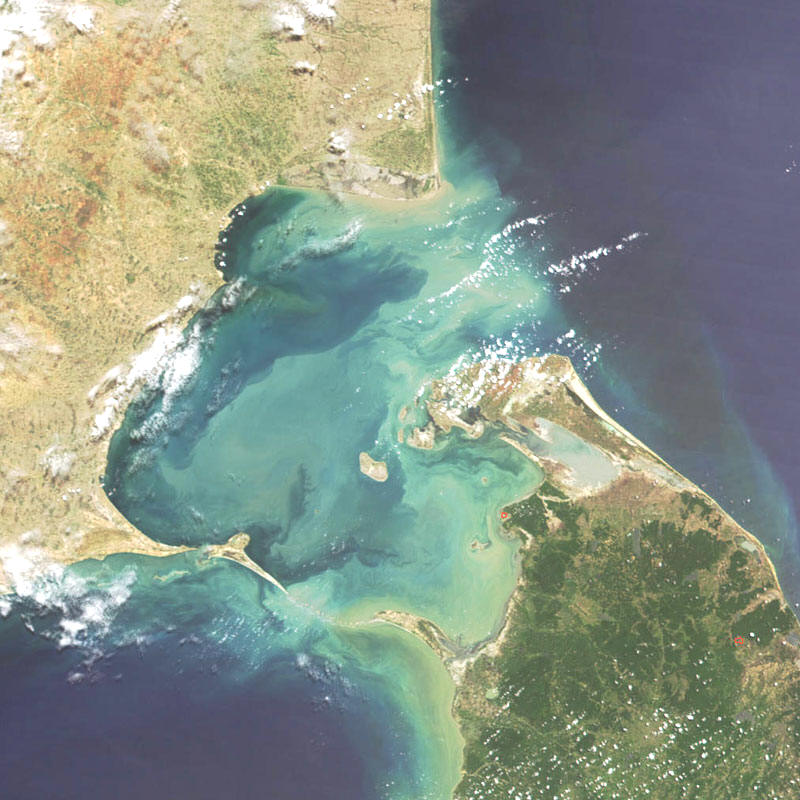|
India & the
Struggle for Tamil Eelam
India admits helping Sri Lanka Navy
TamilNet, 17 January 2008
[see also
India's intelligence support for Sri Lanka
in the waters of the Tamil homeland, 4 November 2007]
A day after Colombo praised the Indian Navy for its role in "breaking the LTTE's
backbone", India on Wednesday acknowledged, for the first time in recent years,
its active role in countering the Tamil Tigers. Sri Lanka Navy Vice Admiral
Wasantha Karannagoda had told the Colombo Post on Tuesday that Tiger supply
vessels and floating warehouses containing 10,000 tons of war-like material had
been destroyed thanks to Indian help. His Indian counterpart, Admiral Sureesh
Mehta spoke in sync and said, "We support by checking our activities on their
coast and their activities on ours. In this way, we help ourselves by helping
them."

''Co-operation with India has been extremely successful in countering the LTTE.
Every year, the Indian Navy with the Indian Coast Guard and the Sri Lankan Navy
holds four bilateral discussions. We are conducting coordinated patrols with the
Indian Navy as well,'' Navy Chief Wasantha Karannagoda said.
''The Navy has destroyed almost all LTTE vessels that could have assisted the
Tigers in attacking the armed forces,'' he said adding, ''Within one year we
have destroyed eight floating warehouses, which had carried more than 10,000
tons of war-like material including artillery, mortar, dismantled parts of three
aircraft, bullet proof vehicles, underwater delivery vehicles, scuba diving
sets, and radar, among other things." He also added that the SLN had acquired
ships and boats, apart from building indigenous vessels to counter the LTTE
threats.
SLN Vice-Admiral Karannagoda also said that earlier the LTTE warehouses were
stationed off the island, around 2800kms away in the high seas and whenever need
arose they came up to about 300kms from the coast and transferred the arms cargo
on to trawlers that brought them to land. He said the Navy has been successful
in putting an end to this type of arms transfer.
India, which stepped up naval patrolling in Palk Strait and Gulf of Mannaar by
deploying more warships under 'Operation Tasha', has now come out in the open to
acknowledge its role in the successes of the Sri Lanka Navy.
Chief of Indian Naval Staff Adm Sureesh Mehta spoke about the coordinated
patrolling between the two navies. He said, "We support by checking our
activities on their coast and their activities on ours. In this way, we help
ourselves by helping them." He also added that the Indian Navy was keeping a
tight vigil on the coast and "closely watching the situation in the neighbouring
country."
According to Indian media reports, Sri Lanka recently provided a long list of
"urgent military requirements" to India, ranging from air defence weapons,
artillery guns, Nishant UAVs (unmanned aerial vehicles) to more radars and even
laser designators for PGMs (precision-guided munitions). Domestic political
compulsions arising out of inflammable Tamil sensitivities have ensured that the
Indian Government remains hesitant in stepping up the offensive military
capabilities of Sri Lanka.
New Delhi has not only been hesitant, but has also been clearly tight-lipped
about its support to Sri Lanka. Reportedly India continues to supply its
neighbouring island with a wide array of military equipment, including new
low-flying detection radars. The process began with the transfer of a
Sukanya-class offshore patrol vessel in 2002, with the primary aim of countering
Pakistan and China's inroads into the wartorn island as merchants of death.
|